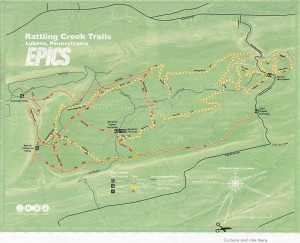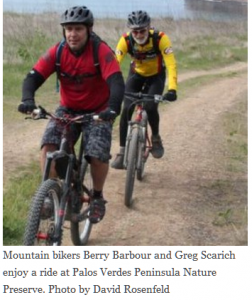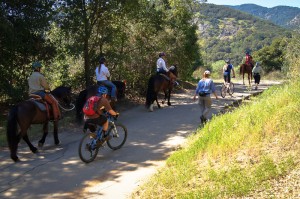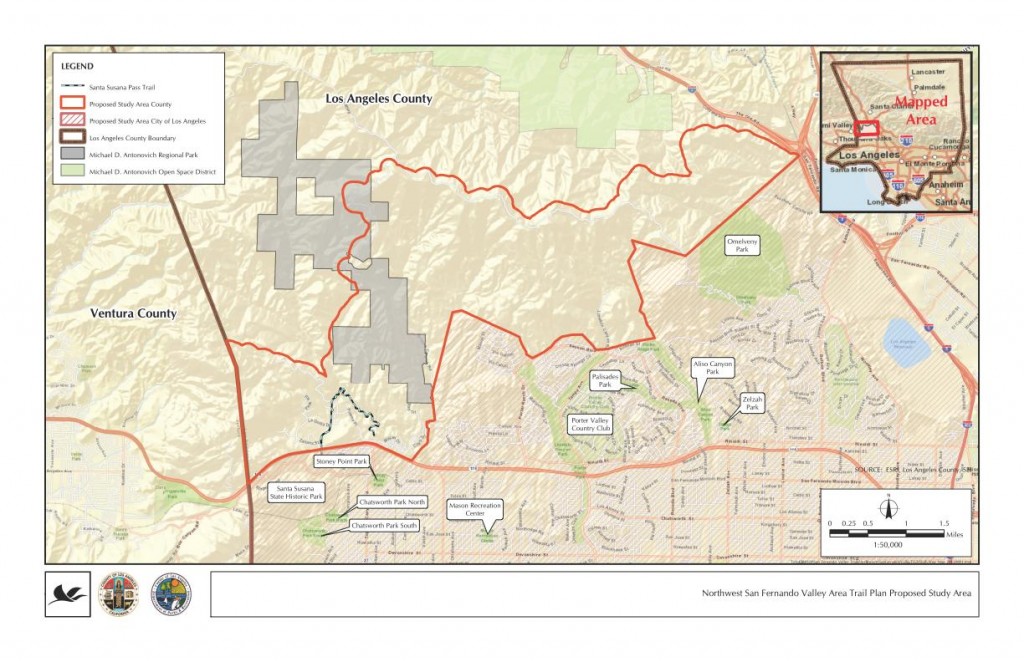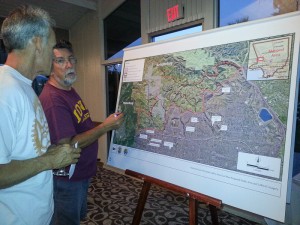CORBA conducts quarterly meetings with representatives from California Department of Parks and Recreation Angeles District and National Park Service Santa Monica Mountains National Recreation Area. It is a chance for us to voice concerns and report on upcoming and past trail work, events, and CORBA programs.
Of particular note are a couple of topics that have been posted on our blog recently. The first is enforcement of dangerous behavior by bicyclists (excessive speed, disregard for other users’ safety). The second, which was brought up in a reply to one of our blogs, is the concept of alternate day use on trails that are currently closed to bicyclists.
Enforcement: This is not a new issue. Citations have and will continue to be issued if and when rangers see cyclists riding in a manner that might endanger the resource, themselves, or other users. This can be, but is not limited to, going too fast. However, the issue that has brought more attention to this behavior is the increased use of the website Strava to create a “time trial” format. Even though groups are not going out on the trails and racing, the very nature of being able to “compete” against others by trying to post the fastest time on the Strava site creates a virtual group, and a situation that could lead to riders going fast at the expense of their and other users’ safety. It was noted that speed is also situational, and that as long as people are being safe there isn’t necessarily an issue with speed.
Alternate Days: The State and NPS representatives at the meeting agreed that alternate days are a viable alternative to trails that are currently closed to bicycles, and recognized that they were aware of similar programs that were being used successfully in other parts of the country. It was pointed out however, that there is currently a Change In Use process in place that allows for changing a trail that does not allow bicycles to one of designated as open to bicycles. The Yearling/Lookout Trails is currently undergoing this Change In Use process (see below for the status of this process). The comment was made that any change to the designation of a trail would have to go through the formal Change In Use process, so it makes sense to try to change a trail’s designation to shared use all the time, not on alternate days. One note: the suggestion of alternate trails came primarily in response to trails that are closed in the State Wilderness of Point Mugu State Park. State Wilderness basically follows the Federal Wilderness Act of 1964 which, among other things, bans “mechanized transport” which includes bicycles. To change the Wilderness Act would require a lengthy and costly political and legal battle which CORBA is not prepared to wage.
Yearling/Lookout Update: This trail, which is on the northwest edge of Malibu Creek State Park with, is slated for an Environmental Impact Report (EIR) because it will need to be rerouted before any change in use can occur. The Topanga General Plan/Malibu Lagoon EIR is taking precedent over other EIRs, so the Yearling/Lookout EIR’s status is on hold at this point. Click here to see our original blog article regarding the Change In Use for Yearling/Lookout trails.
TRAIL MANAGEMENT PLAN UPDATE
The long awaited NPS Trail Management Plan (TMP) is likely going to move forward soon. A consultant has been identified and public meetings and other efforts should begin shortly, with a projected completion date of early 2014. Once completed, the TMP will allow agencies within the the Santa Monica Mountains National Recreation Area to formally address many pressing issues, among them shared use on many trails that are currently restricted to hiking and equestrian use only.


